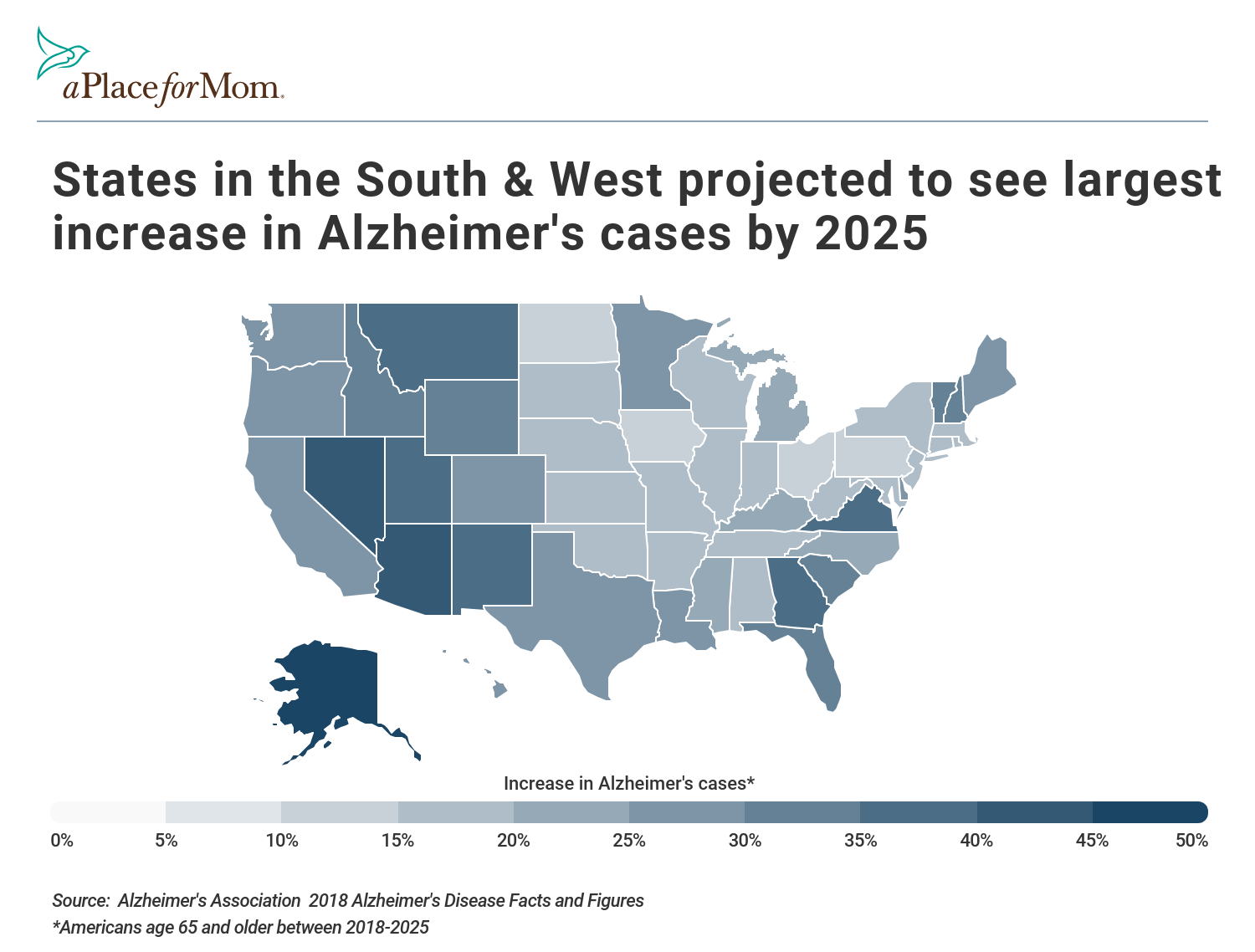
Photo Credit: Alamy Stock PhotoAs the baby boomer generation rapidly approaches retirement age, the U.S.is projected to experience a radical demographic shift.According to the U.S.
Census Bureau, about one in five residents in the U.S.will reach retirement age (over 65) by the 2030s.For the first time in U.S.
history, seniors will soon outnumber children under 18.This aging of the population will have far-reaching economic and social ramifications, especially when it comes to healthcare needs.Specifically, diseases that typically affect the elderly will become more prevalent in the U.S.One of the most common illnesses among people over the age of 65 is Alzheimers disease.Alzheimers disease is the most common cause of dementia.
It is a neurocognitive disorder that affects a persons memory.Alzheimers typically starts with mild memory loss and sometimes progresses to hindering a persons speech, thought process, and ability to respond to his/her surroundings.The exact cause of the disease is unknown and it currently has no cure.According to the Centers for Disease Control and Prevention, more than 5 million Americans suffer from Alzheimers disease.
The onset of the disease usually occurs after the age of 60, and the risk of Alzheimers increases significantly with age.Currently, 11 percent of American adults over the age of 65 have Alzheimers.Unlike other medical conditions associated with aging, such as heart attacks or strokes, the development of Alzheimers disease is often a much slower process.Nevertheless, this disease can still result in death.
In 2017, more than 120,000 deaths were a result of Alzheimers disease.Of these cases, 80,000 were among Americans over the age of 85.Interestingly, about two-thirds of Americans with Alzheimers are women.While there is no definitive explanation for the gender discrepancy, some medical experts postulate that reasons might include womens higher life expectancy.
Additionally, the fact that more men are likely to die from other causes, such as heart disease, is also considered.In 2017, 84,079 women and 37,325 men died as a result of Alzheimers.Alzheimers disease is the sixth leading cause of death in the United States, with death rates on the rise.Between 2000 and 2017, deaths due to Alzheimers rose by 145 percent.
This change is in stark contrast to other illnesses that are also leading causes of death.Heart disease and influenza experienced a net decrease in deaths over the same period of time.Forms of dementia tend to be under-reported on death certificates because it is difficult to distinguish whether a person died because of dementia or if they only had dementia at the time of their death.
According to the Alzheimers Association, the number of older adults dying from Alzheimers may be much higher than what is reported.Even when adjusting for age, the death rate due to Alzheimers disease continues to rise.The age-adjusted death rate due to Alzheimers has almost doubled since 1999.In 2018, the age-adjusted death rate per 100,000 people was 31.
Over a span of 15-years, the Alzheimers death rate increased 20 percent for the 65 to 74 age group, 52 percent for the 75 to 84 age group, and 76 percent for the 85 and older age group.As Alzheimers continues to claim lives, its financial burden on society also remains impactful.Not only does the disease affect individual patients, but also their family members and taxpayers who fund government programs like Medicare and Medicaid.According to the Centers for Medicare and Medicaid Services (CMS), the average annual total medicare payments per beneficiary with Alzheimers was $26,017 in 2017.
Further, the Alzheimers Association estimates that in 2018, the total cost of treating Alzheimers diseaseincluding assisted living facilities, home health care, and other medical treatmentwas around $277 billion.The association estimates these costs will more than double by 2035 and continue rising as the 65+ population reaches more than 85 million by 2050.Although there is no cure for Alzheimers, advances in modern medicine may aid the severity of the condition.The use of biomarkers allows doctors to detect the disease earlier and intervene by treating the symptoms.
Research from Precision Health Economics on behalf of the Alzheimers Association has estimated that early detection could save America nearly $8 trillion when treating people who will develop the disease.Given current population trends, Alzheimers will become an even larger national issue over the next few yearsdisproportionately impacting states with large senior populations.For example, the total number of people with Alzheimers disease in Alaska is expected to increase by 46.7 percent by 2025, compared to only 1.1 percent in the District of Columbia.Overall, Southern and Western states are projected to experience the greatest percentage increase in the number of people with Alzheimers.To find which states have the highest rates of Alzheimers disease currently, researchers at A Place For Mom analyzed prevalence and cost statistics from the Centers for Medicare and Medicaid Services.
For this analysis, states were ranked by their prevalence of Alzheimers disease.In the event of a tie, the state with the higher age-adjusted death rate was ranked higher.The highest rates of Alzheimers are located in the Northeastern or Southern states.10 States With the Highest Rates of Alzheimers DiseasePhoto Credit: Alamy Stock Photo10.
New YorkAlzheimers prevalence among 65+ population: 12%Alzheimers age-adjusted death rate per 100k: 13.2Alzheimers annual deaths: 3,521Projected 10-year 65+ population growth: 22%Annual cost per Medicare beneficiary with Alzheimers: $30,138Photo Credit: Alamy Stock Photo9.New JerseyAlzheimers prevalence among 65+ population: 12%Alzheimers age-adjusted death rate per 100k: 23.6Alzheimers annual deaths: 2,829Projected 10-year 65+ population growth: 28%Annual cost per Medicare beneficiary with Alzheimers: $29,677Photo Credit: Alamy Stock Photo8.MichiganAlzheimers prevalence among 65+ population: 12%Alzheimers age-adjusted death rate per 100k: 34.5Alzheimers annual deaths: 4,428Projected 10-year 65+ population growth: 26%Annual cost per Medicare beneficiary with Alzheimers: $27,209RELATEDMemory care on Long IslandNorthern New Jersey Alzheimers care optionsAlzheimers care in FlintPhoto Credit: Alamy Stock Photo7.
ArkansasAlzheimers prevalence among 65+ population: 12%Alzheimers age-adjusted death rate per 100k: 39.4Alzheimers annual deaths: 1,436Projected 10-year 65+ population growth: 27%Annual cost per Medicare beneficiary with Alzheimers: $21,414Photo Credit: Alamy Stock Photo6.LouisianaAlzheimers prevalence among 65+ population: 12%Alzheimers age-adjusted death rate per 100k: 43.7Alzheimers annual deaths: 2,188Projected 10-year 65+ population growth: 29%Annual cost per Medicare beneficiary with Alzheimers: $27,847Photo Credit: Alamy Stock Photo5.AlabamaAlzheimers prevalence among 65+ population: 12%Alzheimers age-adjusted death rate per 100k: 45.2Alzheimers annual deaths: 2,563Projected 10-year 65+ population growth: 28%Annual cost per Medicare beneficiary with Alzheimers: $21,641RELATEDLittle Rock memory careAlzheimers care facilities in Baton RougeMemory care in Mobile and surrounding areasPhoto Credit: Alamy Stock Photo4.
ConnecticutAlzheimers prevalence among 65+ population: 13%Alzheimers age-adjusted death rate per 100k: 20.4Alzheimers annual deaths: 1,077Projected 10-year 65+ population growth: 26%Annual cost per Medicare beneficiary with Alzheimers: $27,351Photo Credit: Alamy Stock Photo3.FloridaAlzheimers prevalence among 65+ population: 13%Alzheimers age-adjusted death rate per 100k: 20.7Alzheimers annual deaths: 6,980Projected 10-year 65+ population growth: 55%Annual cost per Medicare beneficiary with Alzheimers: $27,511Photo Credit: Alamy Stock Photo2.TexasAlzheimers prevalence among 65+ population: 13%Alzheimers age-adjusted death rate per 100k: 38.5Alzheimers annual deaths: 9,545Projected 10-year 65+ population growth: 43%Annual cost per Medicare beneficiary with Alzheimers: $29,184Photo Credit: Alamy Stock Photo1.
District of ColumbiaAlzheimers prevalence among 65+ population: 14%Alzheimers age-adjusted death rate per 100k: 17.6Alzheimers annual deaths: 125Projected 10-year 65+ population growth: -4%Annual cost per Medicare beneficiary with Alzheimers: $30,823RELATEDStamford memory careAlzheimers care in West Palm BeachMemory care in San AntonioMethodology & Full ResultsFor each state, prevalence and cost statistics for 2017 (the most recent year available) are from the Centers for Medicare and Medicaid Services (CMS).The data is for individuals aged 65 and over with Alzheimers disease, senile dementia, or related disorders.Prevalence rates are calculated using diagnosis codes in Medicare beneficiaries claims.The total costs (Medicare spending) are annual averages of all costs across all types of claims for beneficiaries with Alzheimers disease or a related disorder.Age-adjusted mortality rates, annual deaths, and projected population growth rates are from the Centers for Disease Control and Preventions CDC WONDER online database.
Statistics are from 2017, which is the most recent year available.Population growth rates were calculated between 2017-2027.States were ordered by their respective prevalence of Alzheimers disease.In the event that two or more states had the same prevalence, states with higher age-adjusted death rates were ordered above.States With the Highest Rates of Alzheimer's Disease
posted by James Wirth
Publisher: Place For Mom ( Read More )

